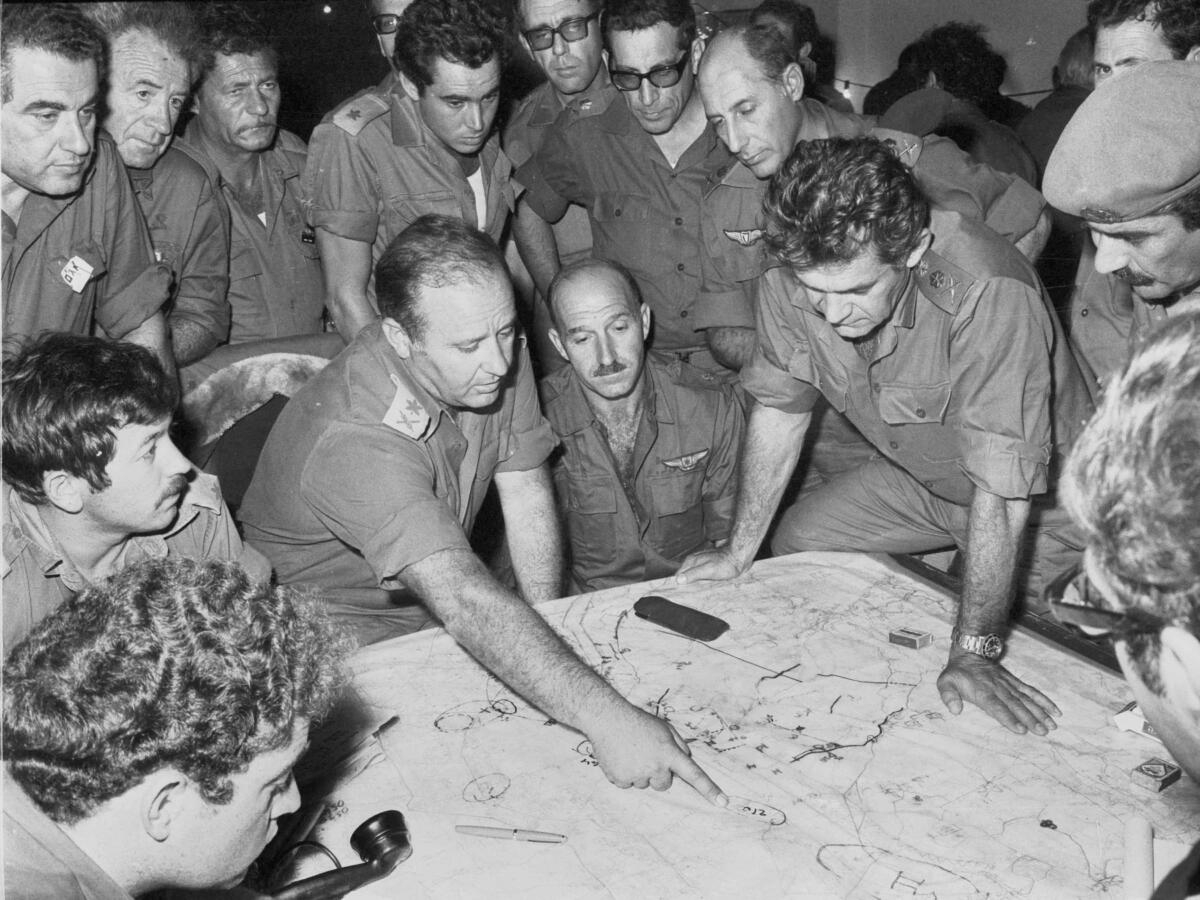In 1971, Egyptian President Anwar Sadat raised the possibility of signing an agreement with Israel, provided that all the occupied territories were returned by the Israelis. No progress toward peace was made, however, so, the following year, Sadat said war was inevitable and he was prepared to sacrifice one million soldiers in the showdown with Israel. His threat did not materialize that year.
Throughout 1972, and for much of 1973, Sadat threatened war unless the United States forced Israel to accept his interpretation of Resolution 242 [which the United Nations passed following the 1967 Six Day War]–total Israeli withdrawal from territories taken in 1967.
Simultaneously, the Egyptian leader carried on a diplomatic offensive among European and African states to win support for his cause. He appealed to the Soviets to bring pressure on the United States and to provide Egypt with more offensive weapons to cross the Suez Canal. The Soviet Union was more interested in maintaining the appearance of detente with the United States than in confrontation in the Middle East; therefore, it rejected Sadat’s demands. Sadat’s response was to abruptly expel approximately 20,000 Soviet advisers from Egypt.
In an April 1973 interview, Sadat again warned he would renew the war. But it was the same threat he had made in 1971 and 1972, and most observers remained skeptical.

Help us keep Jewish knowledge accessible to millions of people around the world.
Your donation to My Jewish Learning fuels endless journeys of Jewish discovery. With your help, My Jewish Learning can continue to provide nonstop opportunities for learning, connection and growth.
The War Begins
On October 6, 1973– , the holiest day in the Jewish calendar–Egypt and Syria opened a coordinated surprise attack against Israel. The equivalent of the total forces of NATO in Europe were mobilized on Israel’s borders. On the Golan Heights, approximately 180 Israeli tanks faced an onslaught of 1,400 Syrian tanks. Along the Suez Canal, fewer than 500 Israeli defenders were attacked by 80,000 Egyptians.
At least nine Arab states, including four non-Middle Eastern nations, actively aided the Egyptian-Syrian war effort.
A few months before the Yom Kippur War, Iraq transferred a squadron of Hunter jets to Egypt. During the war, an Iraqi division of some 18,000 men and several hundred tanks was deployed in the central Golan and participated in the October 16 attack against Israeli positions. Iraqi MiGs began operating over the Golan Heights as early as October 8, the third day of the war.
Besides serving as financial underwriters, Saudi Arabia and Kuwait committed men to battle. A Saudi brigade of approximately 3,000 troops was dispatched to Syria, where it participated in fighting along the approaches to Damascus. Also, violating Paris’s ban on the transfer of French-made weapons, Libya sent Mirage fighters to Egypt (from 19711973, President Muammar Qaddafi gave Cairo more than $1 billion in aid to rearm Egypt and to pay the Soviets for weapons delivered).
Other North African countries responded to Arab and Soviet calls to aid the frontline states. Algeria sent three aircraft squadrons of fighters and bombers, an armored brigade and 150 tanks. Approximately 1,000-2,000 Tunisian soldiers were positioned in the Nile Delta. Sudan stationed 3,500 troops in southern Egypt, and Morocco sent three brigades to the front lines, including 2,500 men to Syria.
Lebanese radar units were used by Syrian air defense forces. Lebanon also allowed Palestinian terrorists to shell Israeli civilian settlements from its territory. Palestinians fought on the Southern Front with the Egyptians and Kuwaitis.
The least enthusiastic participant in the October fighting was probably Jordan’s King Hussein, who apparently had been kept uninformed of Egyptian and Syrian war plans. But Hussein did send two of his best units–the 40th and 60th Armored Brigades–to Syria. This force took positions in the southern sector, defending the main Amman-Damascus route and attacking Israeli positions along the Kuneitra-Sassa road on October 16. Three Jordanian artillery batteries also participated in the assault, carried out by nearly 100 tanks.
Israel Recovers
Thrown onto the defensive during the first two days of fighting, Israel mobilized its reserves and eventually repulsed the invaders and carried the war deep into Syria and Egypt. The Arab states were swiftly re-supplied by sea and air from the Soviet Union, which rejected U.S. efforts to work toward an immediate ceasefire. As a result, the United States belatedly began its own airlift to Israel. Two weeks later, Egypt was saved from a disastrous defeat by the U.N. Security Council, which had failed to act while the tide was in the Arabs’ favor.
The Soviet Union showed no interest in initiating peacemaking efforts while it looked like the Arabs might win. The same was true for U.N. Secretary-General Kurt Waldheim. (Waldheim’s service with a World War II German army unit guilty of war crimes in the Balkans resulted in his being barred from entering the United States after his election as president of Austria.)
On October 22, the Security Council adopted Resolution 338 calling for “all parties to the present fighting to cease all firing and terminate all military activity immediately.” The vote came on the day that Israeli forces cut off and isolated the Egyptian Third Army and were in a position to destroy it.
Despite the Israel Defense Forces’ ultimate success on the battlefield, the war was considered a diplomatic and military failure. A total of 2,688 soldiers were killed.
Reprinted with permission from the Jewish Virtual Library.



